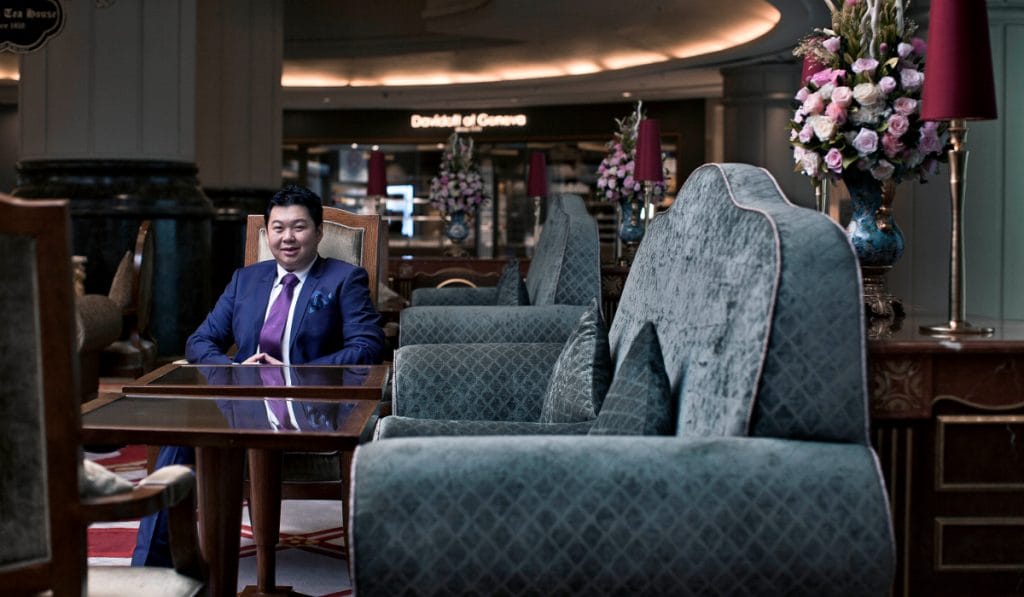Joseph Yeoh
Vice President, YTL Land & Development Bhd and YTL Hotels & Properties Sdn Bhd
We now find ourselves halfway through 2017. How has business been so far?
For our Starhill Global REIT portfolio, we have been taking a strategic stance to ready ourselves for recovery by investing in and rejuvenating our assets to deliver sustainable returns. Lot 10 Hutong was also relaunched earlier this year, with new stalls and expanded seating to welcome more customers. Feedback has been very positive so far and business has soared for this first half.
Global trends indicate declining sales and profits in the retail sector. In march, malaysia’s consumer price index rose to an eightyear high at 5.1 per cent. However, the department of statistics malaysia reported that sales value of wholesale and retail trade registered an 8.3 per cent growth in february 2017, compared to february 2016. Could you shed some light on this yoyoing trend?
This is not unexpected. We must become more accustomed to fastchanging trends with quick cycles as this will be the norm moving forward. Malaysian retail is definitely going through an evolution. While the current retail scene in the Klang Valley is soft with consumers being more circumspect in spending due to the higher standard of living, the love for shopping has not wavered. They are looking elsewhere, especially online, for more options and value. Fortunately, they are still drawn back to malls and shops for the experiences as the internet cannot offer this emotional connection.
How do you see the malaysian retail scene faring in the next few years?
The retail landscape in Malaysia will be fast-changing with stiffer competition from new malls sprouting all over the country. Construction of mega infrastructural projects such as the MRT and LRT in Kuala Lumpur will also lead to more mixed-use Transit- Oriented Developments (TOD), with integrated retail spaces in city fringes as more people will use public transport and reside outside the city centre. However, this can lead to an over-supply of retail space over time. I expect to see more cookie-cutter malls having similar retail mix and experiences with chain brand stores opening up across new malls. Against new competition, older existing malls, which are usually better located in the city centre, will have to reinvent themselves to stay vital and differentiate to attract and retain new customers. With increasing standard of living, shoppers will exercise more discretion on spending. As such, malls must now become social destinations of choice to meet, play and connect – not just places to shop and eat.
The rising popularity of e-commerce and online shopping cannot be ignored as we see technology becoming integral to everyday life. How do you see this affecting consumer spending habits in malaysia?
E-commerce is a reality all retailers must embrace as an opportunity, not a threat. It will grow stronger over time as consumers are seeking more options and value online. Thankfully, they still like shopping in malls as a past time, especially tourists; browsing in a store or windowshopping is still a popular pursuit that online shopping cannot replace. As such, there is a need for a new mindset to devise ways to integrate online platforms with physical stores more seamlessly.
How can physical retailers evolve to remain competitive in this rapidly changing landscape?
It is vital for stores to strategically invest in their online sales platforms. Retailers must actively engage with their customers online and on social media to attract them to return to the stores and also continue shopping, even after their stores close, on their online platforms. These days, shoppers want to have an active hand to influence and determine the experience they get, and retailers must revamp their physical stores’ concepts to complement their online platforms with events that add value to social media platforms. Malls and retailers must keep experiences fresh and offerings unique to keep shoppers returning as malls are no longer solely for shopping, but now social destinations to meet, play and connect. The opportunities for online and physical stores are countless as long as we stay creative.
Finally, what can be done to stimulate malaysia’s retail sector?
The malaysian ministry of Tourism and Culture (MOTAC) must work with malls, retailers and precincts to step up marketing efforts to increase tourism receipts by attracting higher-spending tourists. The government can also be more purposeful in incentivising existing malls to rejuvenate and help existing shopping belts (such as Bukit Bintang) to revamp, as they are usually more centrally located, established and accessible to tourists and locals. There definitely needs to be a control on the development of new malls or mixed-used developments with retail component within precincts and cities to prevent an over-supply of retail space. It’s also advantageous to encourage the growth of local brands to differentiate our product offerings from competing shopping cities.



